
Dexmon Chua Yizhi was a material analyst and Singaporean who was brutally murdered in Singapore by his former girlfriend's husband Chia Kee Chen, who craved revenge on Chua for having an affair with his wife and thus gathered two people to help him abduct and kill Chua. The manner of his death was due to a grievous assault that caused severe fatal injuries. Dexmon Chua was 37 years old when he died at Lim Chu Kang on 28 December 2013.

On the morning of 25 November 1977, ten-year-old schoolgirl Cheng Geok Ha was last seen playing with her two friends at the carpark below her flat at Chai Chee, Singapore. According to the pair who were last with Cheng, the girl hung out with them at the playground for a while before she left, and she never came back home on that night. The Cheng family reported Cheng missing, and there was a public appeal which seeks information to trace her whereabouts.
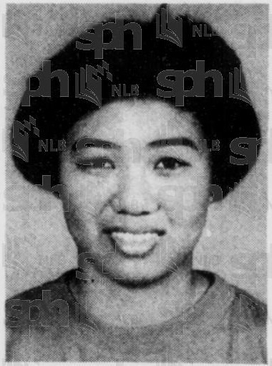
Liang Shan Shan was a 17-year-old Malaysian schoolgirl who was reported missing in Singapore on 2 October 1989. Liang was found dead nearly two weeks later at Yishun Industrial Park, where her highly decomposed body was discovered by a group of National Servicemen who were training nearby that area. Despite conducting a post-mortem examination, the cause of Liang's death was uncertain due to the high state of decomposition and disappearance of certain body parts. Police investigations revealed that prior to her disappearance and murder, Liang was last seen boarding her school bus and left the school at 1pm on 2 October 1989, the same day she went missing.
On 13 March 1997, at one of the HDB flats in King George's Avenue, Kallang, 53-year-old Sivapackiam Veerappan Rengasamy was discovered dead in her bedroom by her son. Sivapackiam was found to have been stabbed three times in the neck and she died from the wounds. During police investigations, Sivapackiam's tenant Gerardine Andrew, a 36-year-old prostitute, told police that on the day of the murder, she returned to the flat and saw three people attacking her landlady and robbing her, and they threatened her to leave after briefly holding her hostage.
On 26 August 1996, at a flat in Bedok Reservoir Road, 25-year-old Jimmy Chua Hwa Soon, an army sergeant of the Singapore Armed Forces (SAF), brutally slashed his 39-year-old sister-in-law Neo Lam Lye and four-year-old nephew. While the boy survived the attack, Neo died as a result of 109 stab and slash wounds on her body. Chua was arrested five hours after the cruel attack, and he admitted to the killing, revealing that he had an affair with Neo ten years prior to the murder. Although Chua put up a defence of diminished responsibility against the charges of attempted murder and murder, the High Court found him guilty of murder and sentenced him to death. The Court of Appeal's subsequent ruling of Chua's case became a notable legal case report which emphasized on the requirements to find a person liable to the defence of diminished responsibility against a criminal charge in Singapore.

On 20 June 1997, a 65-year-old Singaporean and retiree Low Cheng Quee, also known as Philip Low, was found dead inside his bedroom of his Jalan Rajah flat, where he operated a homosexual brothel, which was colloquially known as a "duck den", which thus coined the case's name as the Duck Den murder. Through the police investigations and interview of two witnesses, the police identified Lim Chin Chong, a 18-year-old Malaysian prostitute who worked at Low's brothel, as the prime suspect behind Low's murder.
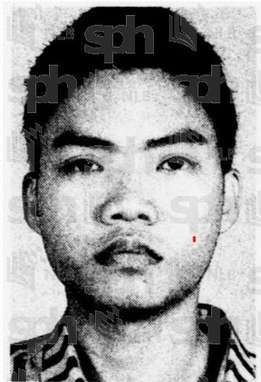
On 10 October 1990, just three days after her whole family migrated from Italy to Singapore, 38-year-old Italian housewife Clementina Curci Di Girolamo, also known as Clementina Curci, was brutally murdered by an intruder inside her new house at Bo Seng Avenue. After she was strangled and became unconscious, Curci's naked body was immersed in a bathtub full of water, resulting in her death due to both drowning and strangulation. Police also established that several items had been stolen from the house, and the hired cleaners of the house stated they never noticed anything amiss while working outside the house.
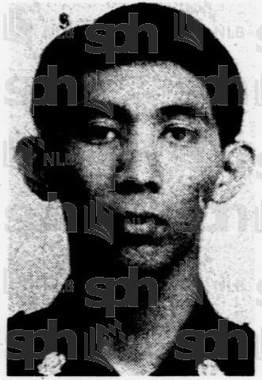
On 15 February 1989, Mirza Abdul Halim bin Mirza Abdul Majid, a 23-year-old Singaporean and police constable (PC), was shot in the head by a suspected burglar who stabbed him in the neck and snatched his service revolver before using it to shoot PC Abdul Halim. PC Abdul Halim, who was later promoted to Corporal during his hospitalization, went into a coma and died 33 hours later. The killer Ong Yeow Tian, who was an ex-convict and one of the two suspects involved in an prior housebreaking case, was subsequently engaged in a shoot-out with several other policemen but was finally arrested. Ong's accomplice was also caught and later sentenced to incarceration and caning for the burglary.
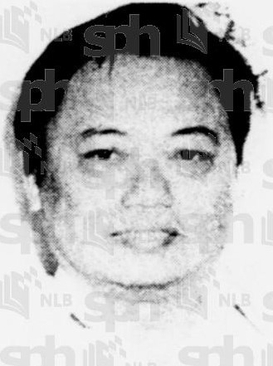
On 11 April 1989, 56-year-old goldsmith Phang Tee Wah was kidnapped by two men before he was murdered. Despite his death, the kidnappers demanded ransom from Phang's family, who were kept in the dark about Phang's death as they contacted the police about their predicament and the crime. Subsequently, four days after Phang was killed, his corpse was discovered and the police were able to nab the two kidnappers - Phang's former employee Liow Han Heng and security guard Ibrahim bin Masod, who was Liow's friend and driver.

On 16 April 1994, 80-year-old Loo Kwee Hwa, who was heading to a friend's Bedok North flat to go play cards with her acquaintances, was found murdered at a flight of stairs between the 15th and 16th floor of the same HDB block, and bloodstains containing her DNA were also found inside the lift she last entered. The gold jewellery which Loo was last seen wearing had also been stolen by her attacker.

Between April 1992 and December 1992, there were two cases of taxi drivers being killed in Singapore, specifically at the secluded areas of Yishun. The first was Seing Koo Wan, a 58-year-old taxi driver who was found with several stab wounds on his body. Despite a police appeal, Seing's killer(s) was never found and the case remained unsolved for eight months before another taxi driver, Teo Kim Hock, was allegedly kidnapped by two men who demanded a ransom from his family. However, in truth, 59-year-old Teo was killed before the calls for ransom arrived.

On 9 August 1972, which falls on Singapore's National Day, 42-year-old wine shop owner Chew Liew Tea, who operated a wine shop at Amoy Street, was shot and killed by two Chinese Malaysians Lim Kim Huat and Neoh Bean Chye, who both escaped Singapore and fled to their home state of Penang in Malaysia, before they were separately caught by the Malaysian police between September 1972 and February 1973, and extradited back to Singapore to be charged with Chew's killing.
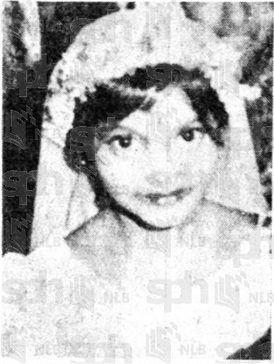
On the night of 10 November 1977, Usharani d/o Ganaison, the seven-year-old student of Cairnhill Primary School, went missing after she went out of her flat to buy drinks to celebrate Deepavali with her family. About seven hours after her disappearance, she was found murdered nearby the void deck of her flat, and the medical evidence suggested that she had been molested and strangled.

On 24 February 2023, three days after she was reported missing, 28-year-old Hong Kong model, socialite and Internet celebrity Abby Choi was found murdered, with her headless body discovered at a village in Tai Po, a suburb in Hong Kong. Reportedly, some of her body parts were hidden inside a refrigerator and some of them were cooked.
On 20 September 1981, Kalingam Mariappan, a 45-year-old boilerman, was last seen entering a lorry with two men after the three of them had drinks and a third man at the coffee shop, and he was missing for two days before his wife reported him missing. The two men last seen with Kalingam were eventually brought in for questioning by the police, and one of them admitted that Kalingam was dead and they were responsible for assaulting him and setting his body on fire. Kalingam's body was later found at the East Coast Parkway, and the two suspects - 22-year-old lorry driver Ramu Annadavascan and 16-year-old news vendor Rathakrishnan Ramasamy - were both charged with murder. Eventually the trial court sentenced Ramu to death for murder while the other, Rathakrishnan, was imprisoned indefinitely under the President's Pleasure since he was still underaged when he killed Kalingam.

On 31 October 1983, a 66-year-old woman named Chong Kin Meng was found murdered inside her Clementi flat by her foster son's wife. The police investigated and they managed to arrest a suspect for her murder a month later. The 23-year-old suspect, Teo Boon Ann, was found to have entered the flat under the pretense of providing Chong's foster son a wedding invitation card and a gift in his father's name, before he proceeded to kill her during a robbery attempt.

On 14 July 1993, 50-year-old sub-contractor Sim Ah Lek, who was also a moneylender, was killed by 37-year-old Phua Soy Boon, who was his creditor, after he refused Sim's request to borrow S$10,000 to him. After killing Sim, Phua stole Sim's Rolex watch, diamond ring and S$9,000 in cash, and even stuffed the dead body inside a gunny sack before disposing of it at Jurong Swimming Complex, where it was found the next morning.

On 25 July 1980, 16-year-old student Ong Ai Siok, birth name Goh Luan Kheng, who stayed at home to study overnight while her adoptive parents went out for supper, was murdered by her unemployed relative Lau Ah Kiang, who entered her home to commit robbery as a result of his desperation to discharge his debts and settle his unpaid living expenses. Six years after his arrest, Lau, who denied committing the murder despite his confession, was sentenced to death in February 1986 after the trial court found him guilty of murder.
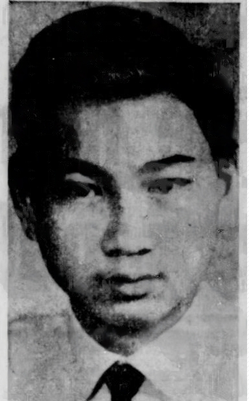
On 24 May 1968, 19-year-old Ong Beang Leck, the son of a millionaire, was last seen leaving his house. His family received a call two days later, being told by the caller that Ong was kidnapped and a ransom of S$100,000 was demanded. After a second phone call in the second week of Ong's disappearance, the ransom was reduced to S$20,000 after negotiations, and it was paid for Ong's safe return. However, after the arrest of one suspect, it was established that Ong was murdered and in the midst of investigations and subsequent capture of four more suspects, Ong's decomposed body was discovered in a manhole at Jurong. Five of the suspects were charged in relation to their roles in the kidnapping and murder of the youth, with three hanged for murder while the remaining two were jailed for abetting the abduction and possession of the ransom money as well.

















